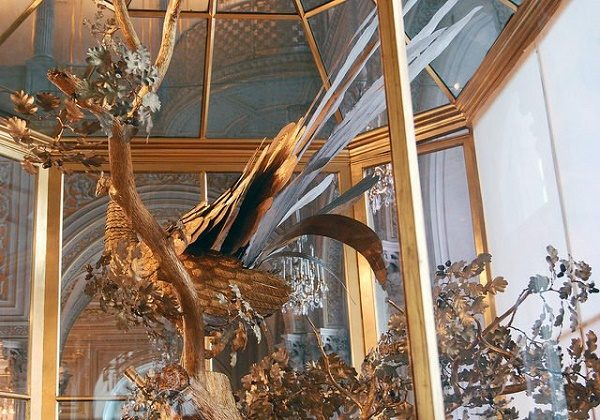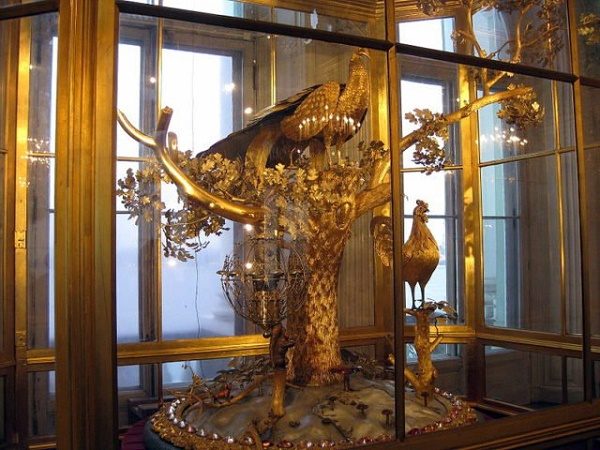It began under the commission of Grigory Potemkin, who wanted to give it to Catherine the Great. The history of the Hermitage's Peacock Clock begins in 1777 when the Duchess of Kingston came to St. Petersburg. Grigory Potemkin learned from the Duchess about James Cox, the most famous creator of the mechanisms in the second half of the 18th century.
Knowing the passion of Catherine II for collecting, the Prince commissioned the celebrated craftsman to make a monumental automaton with a clock for the Empress's Hermitage. Cox invited Friedrich Urey, a German craftsman who had settled in London, to work with him on this order.
In 1781, the clock was brought to Russia unassembled and Russian mechanic Ivan Kulibin restored the clock on the request of Grigory Potemkin. Four separate mechanisms are combined in the Peacock Clock: three of them set the figures of birds in motion, while the fourth is the actual clock movement. These mechanisms are linked by a system of levers which ensures that their operation is in the correct sequence.
Even while it is not in operation, this timepiece-automaton is extremely impressive: a peacock, a rooster, and an owl are depicted on an oak tree. Each of these birds has a lot of symbolism in art history: the peacock is the richest symbol in astral symbolism.
It represents the cosmos, the sun, and the lunar disk. The owl is a sign of night, quiet and wisdom and the rooster symbolizes light, life, and resurrection. In addition to the birds, the tree is decorated with oak leaves, acorns, and a few squirrels.

Today it is a prominent exhibit in the collections of the Hermitage Museum in Saint Petersburg.





Reader Comments